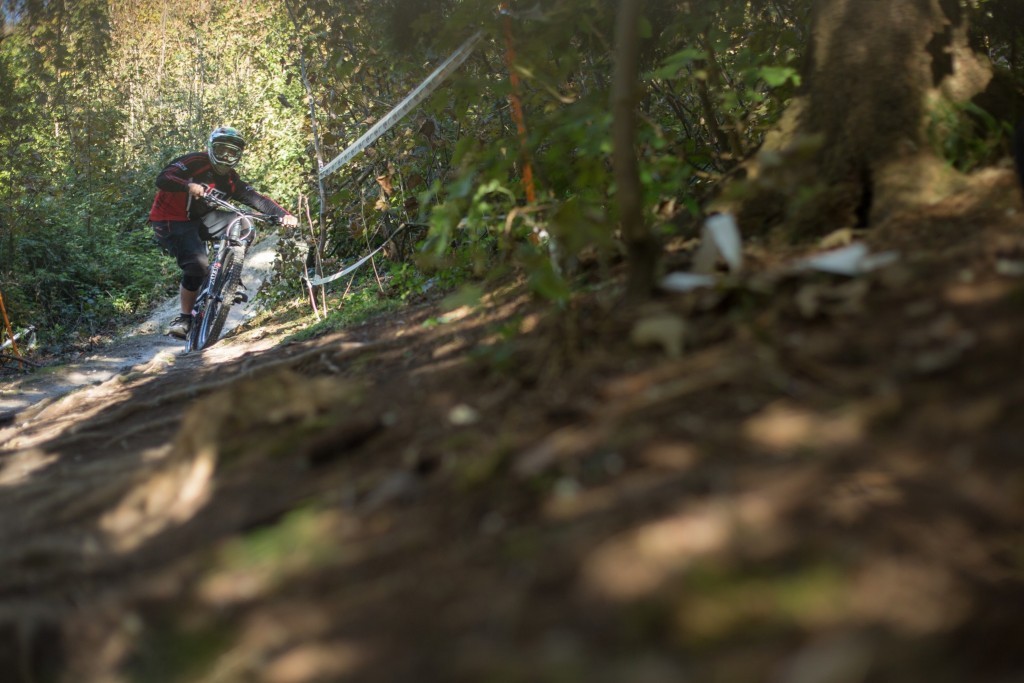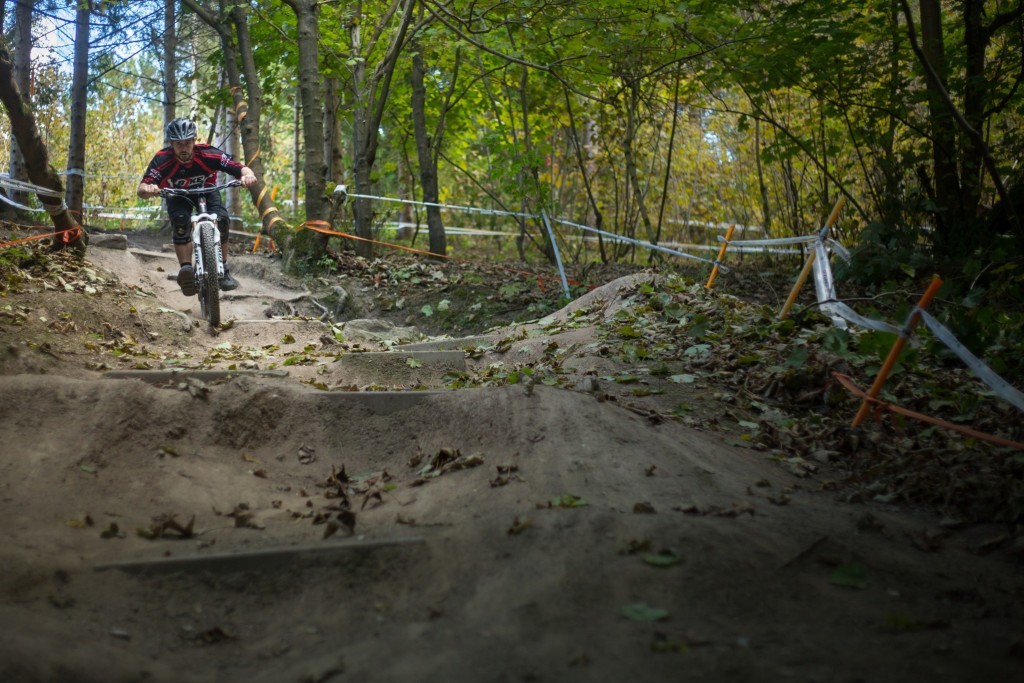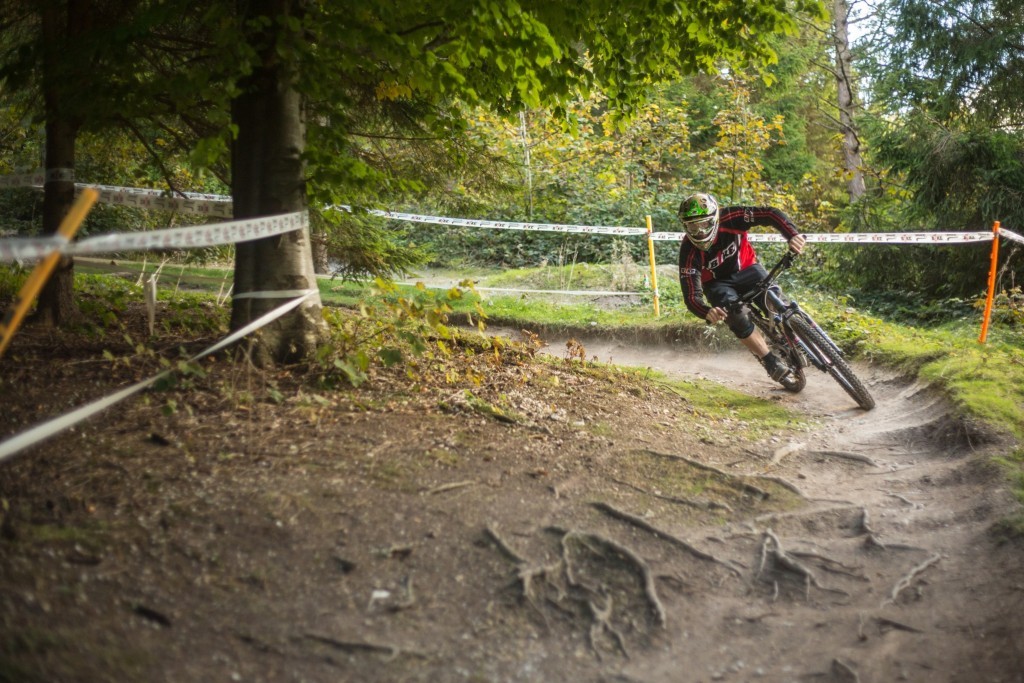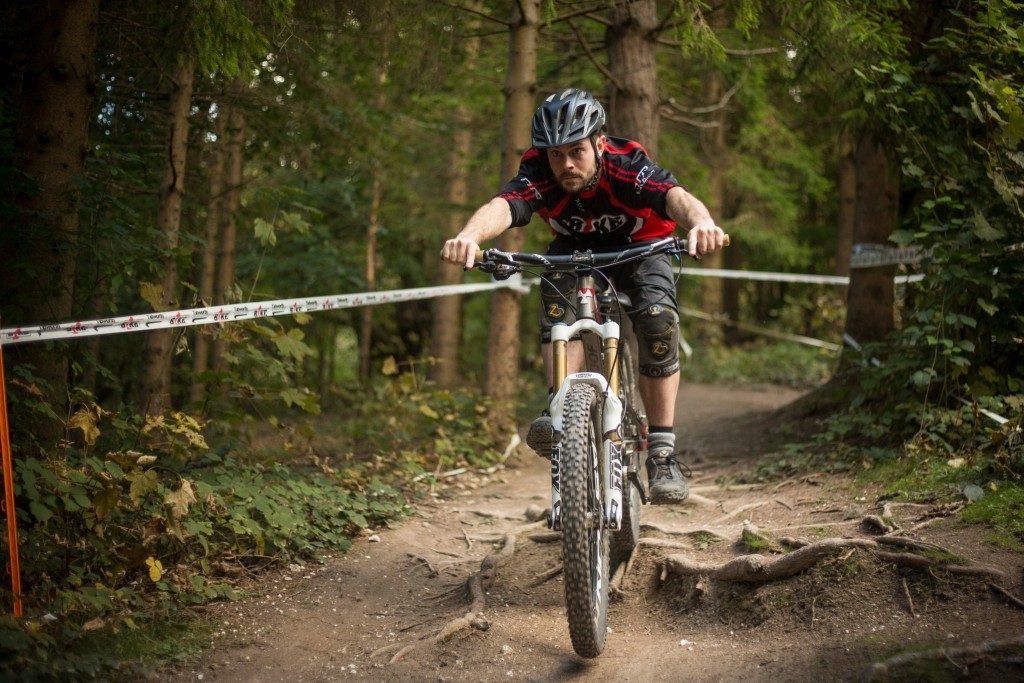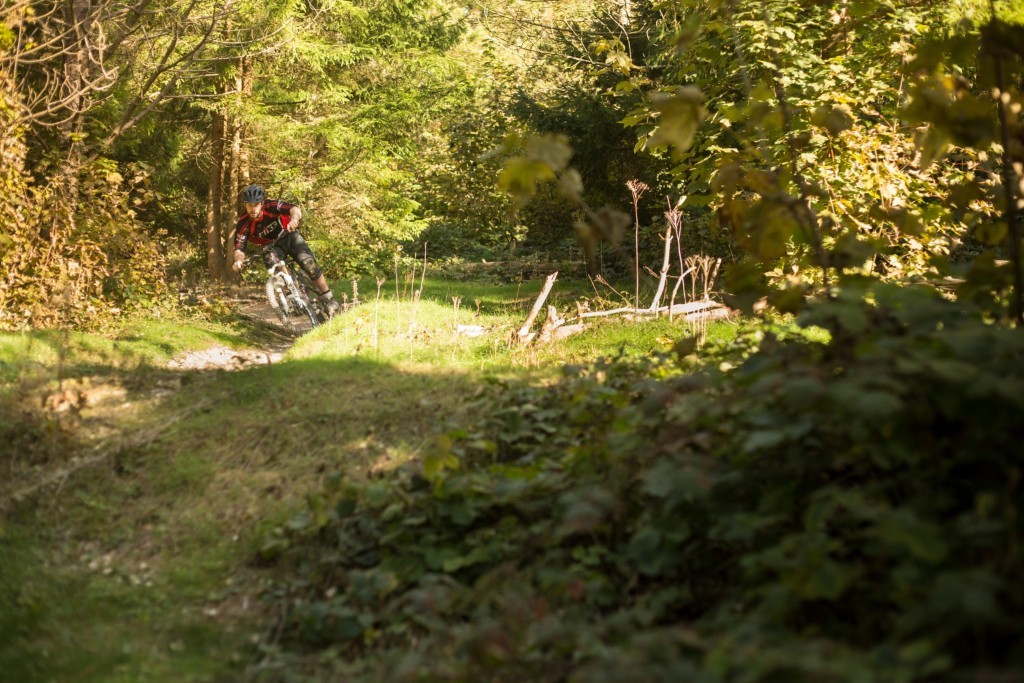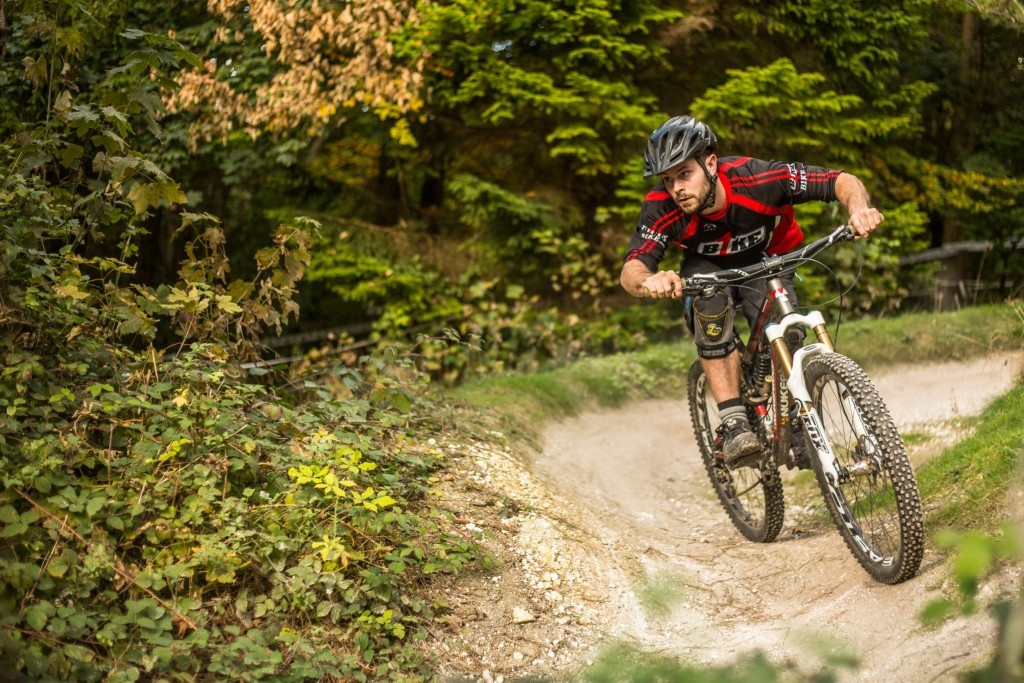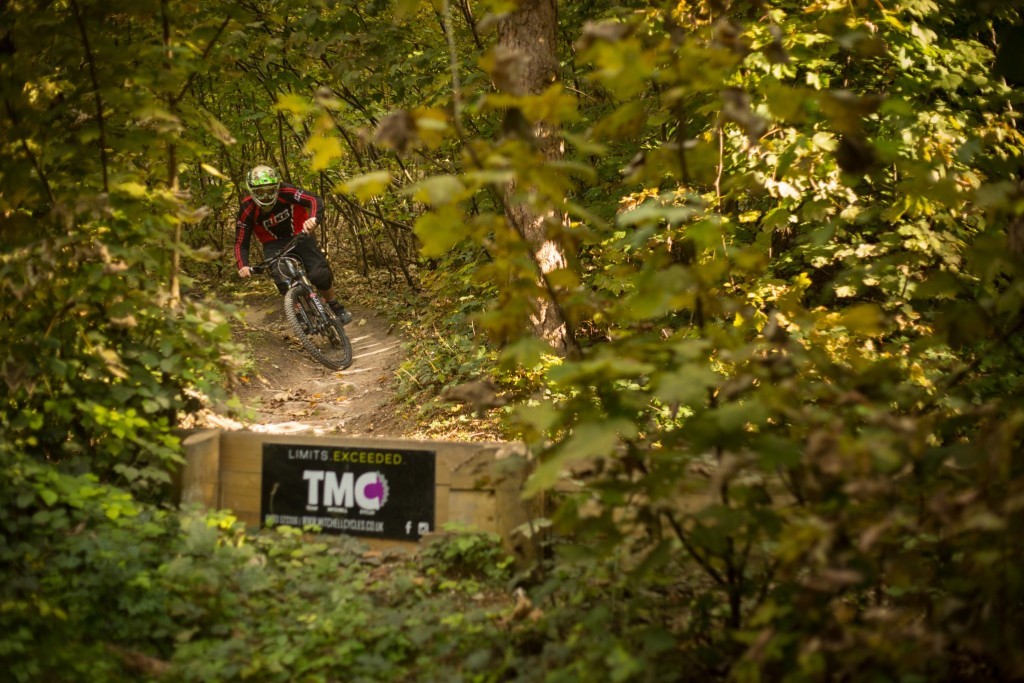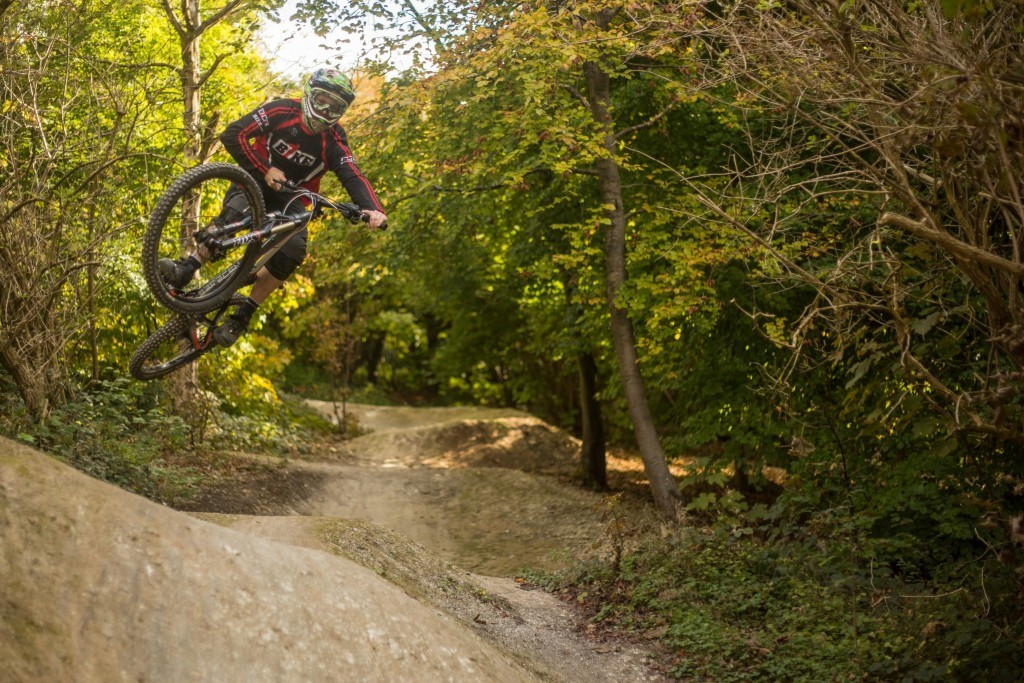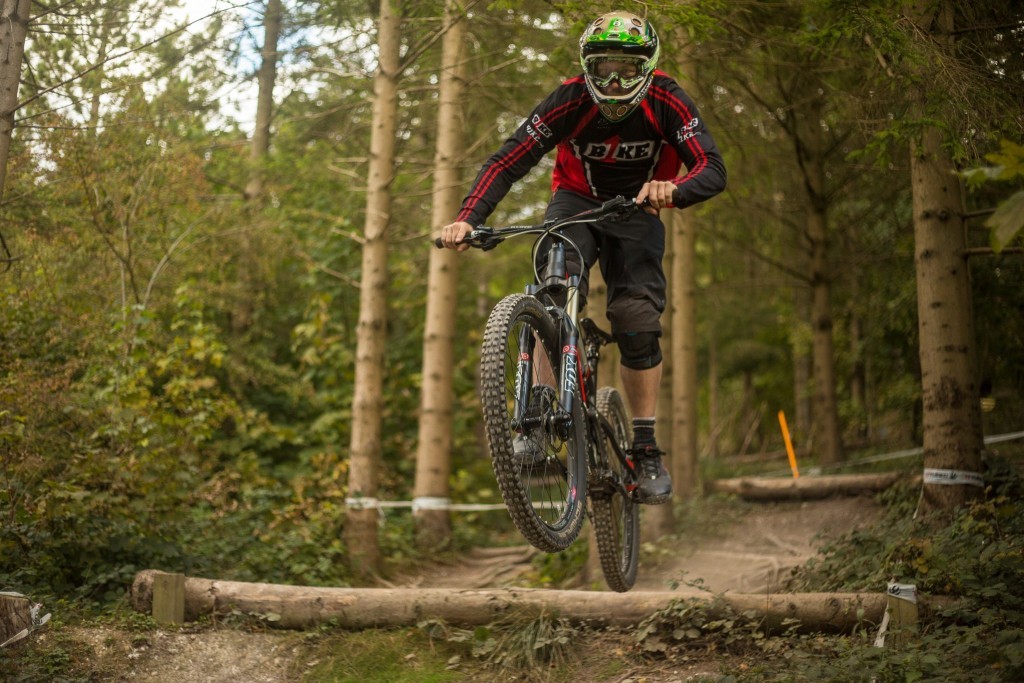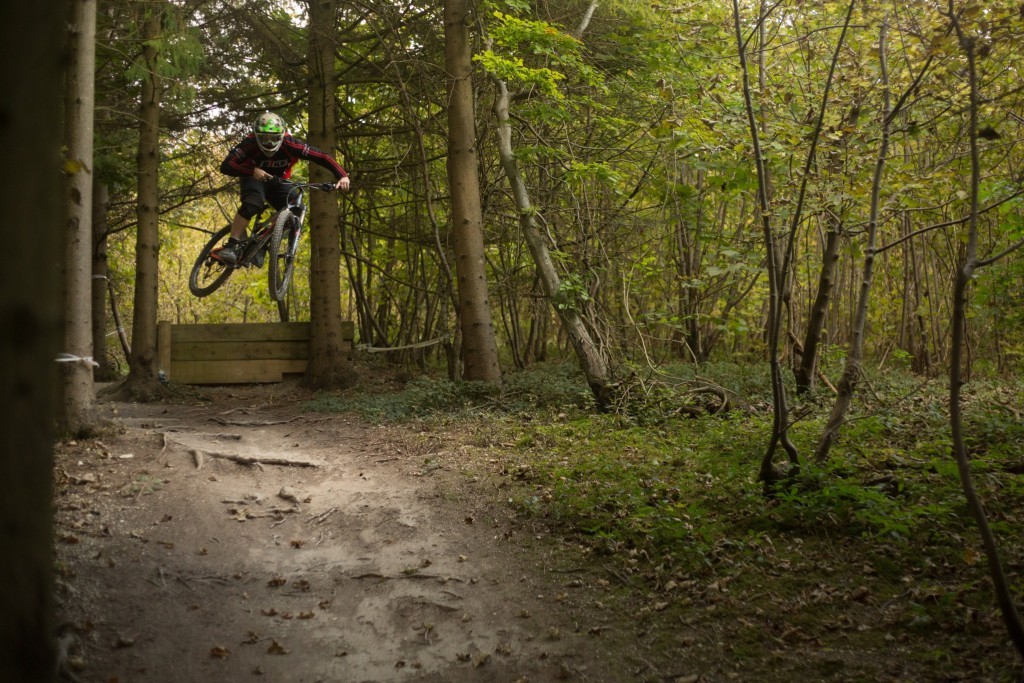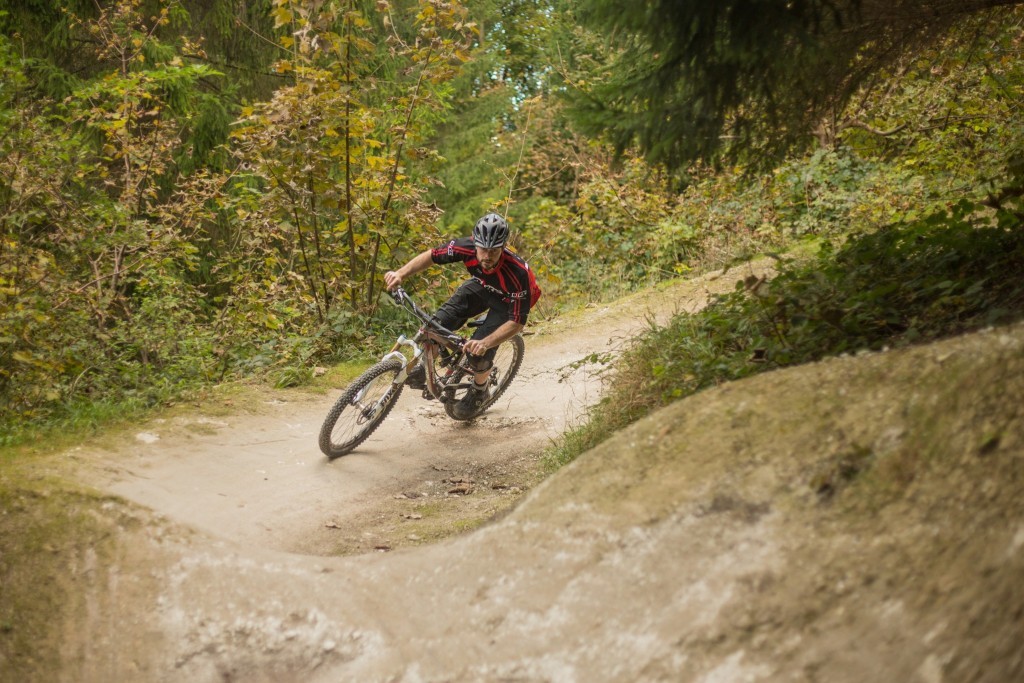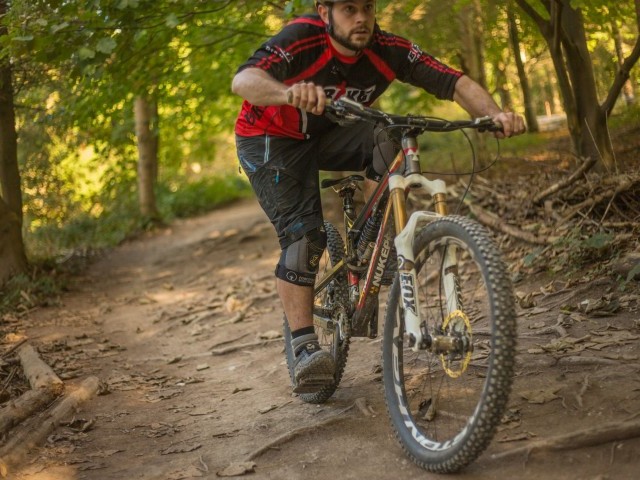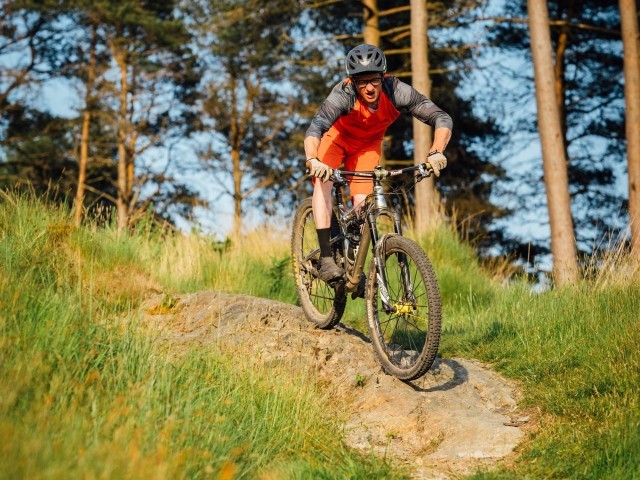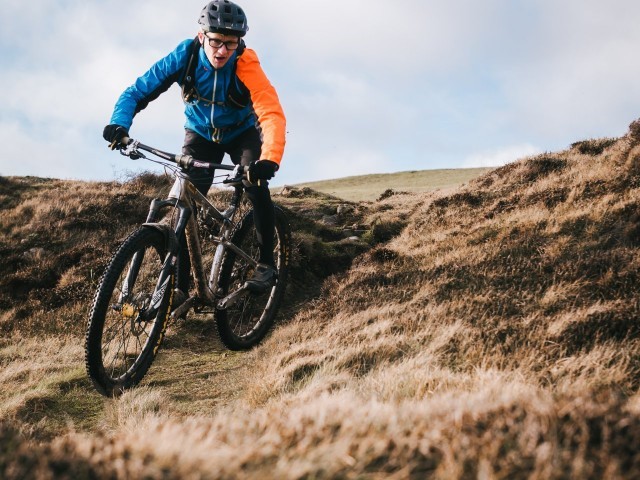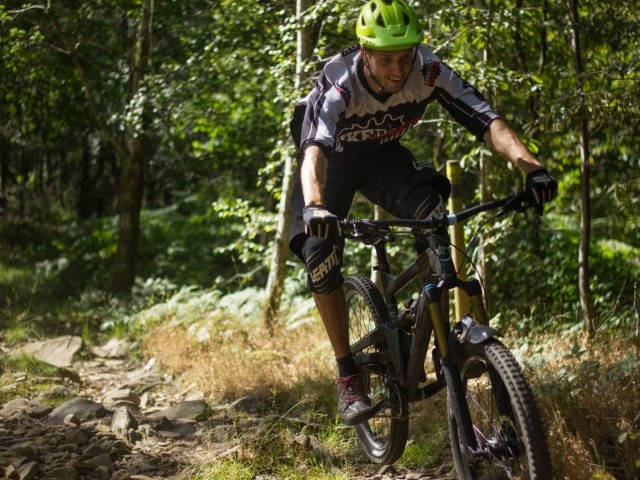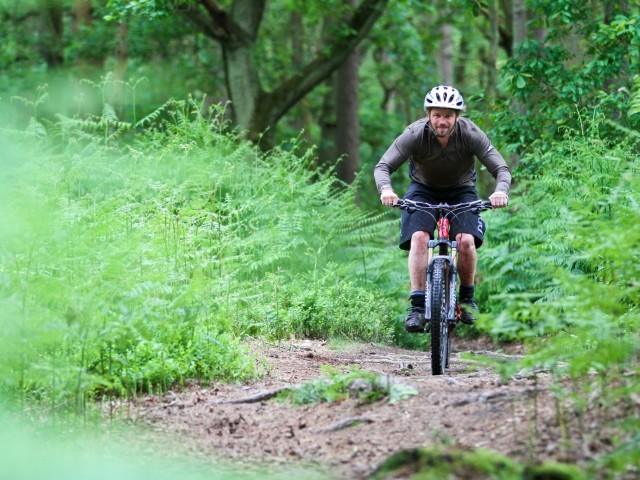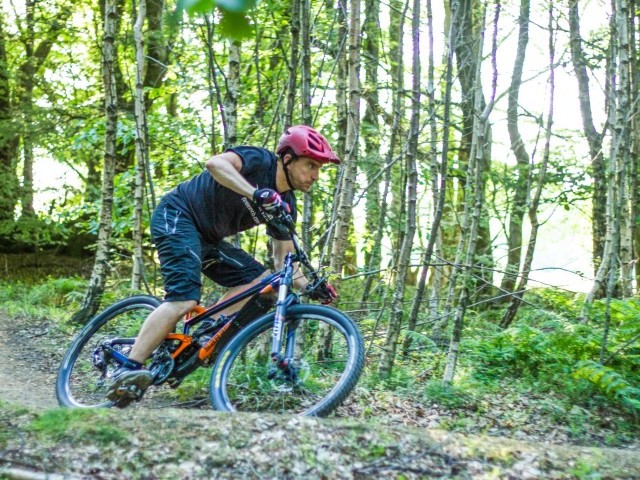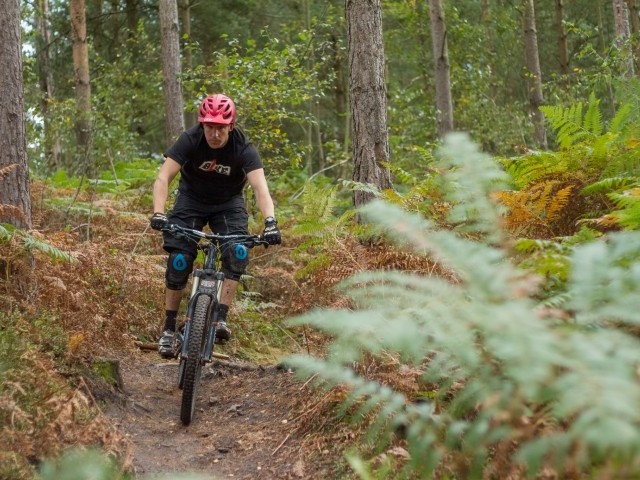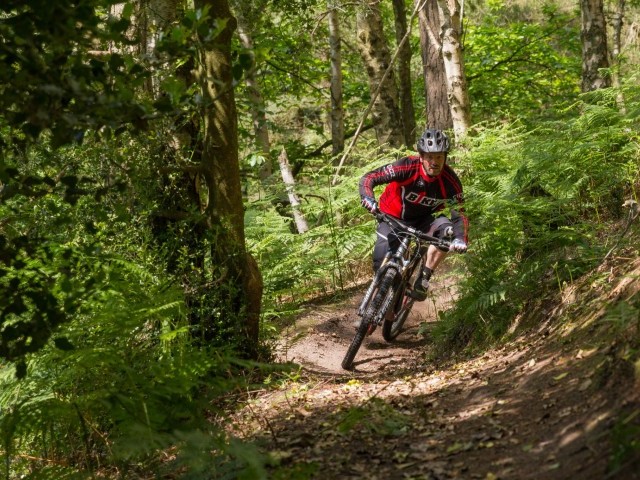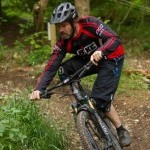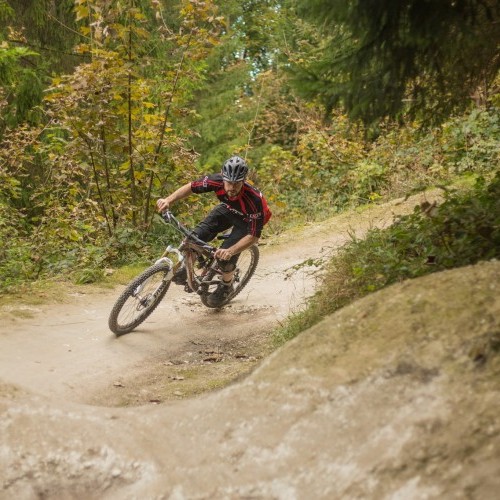
Conquering Camber
Technique / Terrain
Introduction
We often think of trail as up or down, ascent or descent. The reality is we live in a far more three-dimensional world where often the fall line of the terrain is crossed rather than followed. The cross fall of the trail can challenge a rider and present a problem that pushes them to places either they don't want to go, or the trail itself doesn’t.
Camber can confuse and confound, coping with it is a capability that will give you greater confidence and control. Read on, and you’ll see for yourself.
The truth is you many of us deal with camber every time we ride, but it can be a question of degrees, as to whether we shred on through or slip, slide or stall. Most trails made of dirt will be engineered with a cross fall to promote drainage and sustainability. However, this level of camber requires little in the way of technique to cope with and only when the camber becomes more severe is a skills gap recognised.
As the technicality of trail pitches up so too can the frequency and degree of camber become more apparent and affect the rider more negatively. There will come the point when it isn't possible to get through sections relying on the minimalistic approach of ‘point and hope’. What then are the keys to success?
As always the answer lies within the correct application of the skills identified in our system. Applied independently each will be beneficial but put them together, and the results will exceed your expectations, and you’ll find grip where other slip, hold your line just fine and cross the cross fall line with confidence.
In short with a little practise and know-how you can cease to be a ‘camber gambler.’
It’s not only about being equipped to deal with the sections that ‘force’ you to take on a side slope but more about widening your options. By gaining confidence through improved technique, you will open up a significant number of line choices, which might otherwise be closed to you. Getting in higher and earlier into switchbacks, ‘bus stopping’ low wet points on the high side of a trail or bypassing lines that may not leave you with the highest exit speed to that section or in the right place for the next, all become options.
As ever, what we do as a rider is always going to be the biggest factor in terms of developing skills and applying them for success. However, there is no getting away from the fact that things we do (or don’t do) before heading off, will also play their part in defining how well we cope out on the trail.
Pre-ride, two of our favourite suspects raise their heads; tyre pressure and suspension set up. If you want to create more grip you need to be in a position to shape your tyre to a degree to provide a fatter edge and wider contact point with the trail. Having an overly inflated tyre bounce up off the trail will hinder progress and reduce the grip at your disposal. The same applies to your suspension. Finding the balance between sucking up the bumps, not packing down too readily, nor the suspension pinging back at you too rapidly when compressed can take a little experimentation. Both the compression and rebound are important to get dialled to your weight and surroundings.
The nature of how camber comes to be, means that as well as having a side-slope to deal with you may also be faced with a fair few ‘inputs’. Camber and roots often go hand in hand. It could be the roots themselves that create the camber. As a trail is worn into a hillside and cuts down to the root ball of the trees that line the trail, so camber can be created. If your bike’s suspension or tyre pressure are not helping, the chances are they are hindering.
If you are going to hold your line when the camber ramps up, being smooth and fluid will have a significant impact on success. Smoothness and fluidity are not by any means born only out of the way your bike is set up, but whatever you have at your disposal, make the most of it.
As with any section of trail, ‘Performance Cues’ can start to do their thing and upset your ride and your ability to tackle camber. To recap; ‘performance cues’ are things that affect the way we ride. We recognise three types of performance cue - although one feature may combine all three.
Any camber can be seen to be a ‘visual’ performance cue. The steeper the face we are traversing the more we can be drawn into looking down and into the section rather that up and through to our exit point. As ever, keeping your flow through more technical sections requires the rider to be thinking way ahead of the bike. Being visually drawn to what is just in front of your front wheel will stifle the ability of the rider to do that.
The physical and mental games are inherently intertwined, and there is an element of one thing leading to another. Succumb to the visual draw that camber might create, and suddenly your commitment to both the section ahead and your own skills set can start to desert you. Any perceived threat can quickly lead to you, as a rider, tightening up. Although this may be an unconscious reaction to what you see, getting tight on the bike will negatively affect how we deal with inputs and thus how smoothly we can ride and how much traction we can find.
The two other performance cues are “input” and “waiting”. When these two combine, you are going to struggle. The ‘input’ performance cue (dealing with bumps and stalls etc.) cannot be addressed by building a wall…like most things in life. Shutting down and tensing up will not allow the bike to move as freely as required below you.
The more you tense, the bigger the inputs feel. The bigger they feel, the more you might grip the bars and hold your breath. It’s a downward spiral and grip & traction are early casualties especially when the camber is exaggerated. As soon as it is harder for the bike to go forward than slide downward, it will take the path of less resistance.
An expectation of what might occur can easily lead to anticipation building up in the rider; we call this performance cue ‘waiting.’ We all know how slippery and hard it is to tackle off camber roots, right? Keep thinking that way, and you might well find they live up to your expectations sooner rather than later.
For sure you'd be mad to completely ignore the changing nature of the trail ahead, but what is important is how you think about it. There is a world of difference between thinking about the worst case scenario and thinking what you can do to negate the effect the trail ahead might have. Thinking ‘Oh’, ‘My’ and ‘God’ as you look through what you are faced with probably is not going to serve you as well as thinking ‘Footwork, Looking & ‘Body Position’.
Having a game plan is always going to better than not having one and although sticking to it can be challenging it's crucial to commit to what you are doing and try to avoid self-doubt. If you expect at any moment to find your wheels slipping out from under you, you are more than likely to react in a way that will promote this outcome. It is this very base state of human nature, our response to a threat, that we need to realign if we want to promote success.
To hold a high line, maintain grip and ride a camber, staying loose is hugely important. When it comes to camber, the wheels finding that path of less resistance can come on quickly without a great deal of warning. There are ways of course that our physical inputs as a rider can a) stop this happening and b) bring the bike back under our control if it does.
Approaching the section, looking up and through, looking to your exit, will help overcome the negative affect the visual performance cues can have. Staying loose, breathing and allowing the bike to rise and fall more freely will offset these inputs. Additionally thinking through the section early will ensure you have a positive game plan of things to do and will help you overcome performance cue ‘waiting’.
With the right mindset, and doing all you can to offset the combined affront of performance cues, there are a few key physical inputs that will allow you to ride camber with greater success and greater confidence.
If you have committed to looking up and through a section and committed to taking on the camber, finding grip is your goal. By leaning the bike into the slope, but keeping yourself centred above the tyre line, you can dig your tyre edges into the trail, which will help you find the required grip.
As you lean the bike into the slope, drop your downhill pedal and stand above it. For those of you that ski it may well have a familiar feel to weighting your downhill ski as you traverse a slope. Don't let your body lean into the slope as the bike leans. Keep directly above those tyres, and your mass will assist in finding the grip to see you through the section.
Using proper footwork and positioning your body over the tyre line will enable your tyres to find grip more easily. As you approach the section, you can also look through it for points where grip can be found. It is unlikely that the camber is entirely uniform; look early, and you might see a few flatter spots to connect up as you roll through. Roots, to the untrained eye, might look uniformly horrifying, but rest assured that there will be knuckles and flat spots that can provide something to push your tyres into rather than shy away from.
We also need to consider how we can push the bike into and up the slope. Steering up the slope with any sharp twists of the bar you will be asking to wash out your front wheel. The action of turning the bars, for one thing, shortens the ‘edge’ you have created by leaning the bike and weighting the bike correctly.
Secondly, turning the wheel into the slope will decelerate the bike slightly, It becomes harder to go forward and thus the chances are it might well start to move sideways. Try instead to use your body mass to drive the bike into the side slope and effectively push it where you want it to go. Twisting the hips into the slope and dropping your heel will help to drive the bike to follow the line you want.
Just as we have looked at previously in cornering, using a little of what we call ‘magic foot’ is definitely going to help. Essentially this involves rolling your weight onto the big toe pad of the foot that is dropped (the downhill one). Softening your standing leg a little (bending it) will further promote this hip twist. The combined approach of sitting just behind the centre line, twisting your hips and sinking your mass into a dropped heel will give you traction where you thought there was none and help the bike maintain its forward momentum.
You won’t hold every line, but if the bike does start to slide down the slope, you are in a position to push against it and drive it up the slope. Additionally, positioned above the tyre line, should the bike start to drift off and slide down the camber you will stay on top of the bike rather than it being spat out from below you.
If it starts to slide down the fall line, keep doing the good stuff. Do more, don't just freeze and brace for impact. Drive harder down into the dropped pedal, look with more conviction to where you want to be next and twist those hips. Apply all these skills and keep doing it. Remember to look with your belly button, not just your eyes. Point your midriff up the slope and drive the bike where you want it to be.
Thinking of the trail ahead as a section will also promote success. By the entry point, you should have looked through the section (spotting potential flat or raised spots that might help promote traction) and set your entry speed. In the section be in a position to accelerate through it. Decelerating on a camber will not promote an optimal outcome. If the bike’s forward path is hindered, it is unlikely just to come to a grinding halt but more likely to accelerate away from you and down the slope.
Finally commit with confidence, breath and loosen your grip on the bars. Dropping into the ‘pocket’, sitting into the bike, you can use your body mass’s momentum to push the bike where you want it to go. The moment you ease off from positive inputs you are likely to be promoting the negative ones. There is no real grey area when it comes to camber.
If may help when polishing these skills to find a section that is relatively simple and work the techniques hard where the penalty for failure is low. Once you find that sweet spot on the bike that has you pushing it through the section and driving it, seek out a more challenging and distinct cross fall.
You will be amazed at the line you can hold and thus the options that this opens up to you. Camber can easily bully you into a low wet line, or off the trail completely. Frequently in life, we are encouraged to stand up to bullies. In this instance, it’s less a case of ‘standing up’ to bullies and more a case of ‘sitting into’ the bike. As with many techniques the more you relax, the more effectively you will apply them. The better you implement them, the better you feel. The better you feel, the more confident you become and so on and so forth.
Danny Harts ‘balls’ may have been accredited for his World Championship success in Champery all these years ago but the reality is his hips and heels did all the hard work in countering camber, the aforementioned parts of his anatomy were really just along for the ride!
This technique article was in Issue 44 of IMB.
Related
By Richard Kelly
Richard Kelly has been riding bikes since forever, and teaching people to become better mountain bikers for over a decade. He’s always out in the Surrey Hills training riders, building trails and riding for himself whenever he gets the chance. His unique perspective on mountain bike technique has earned him fans the world over, with some speculating he is actually Jamiroquai or perhaps Jack Sparrow…






